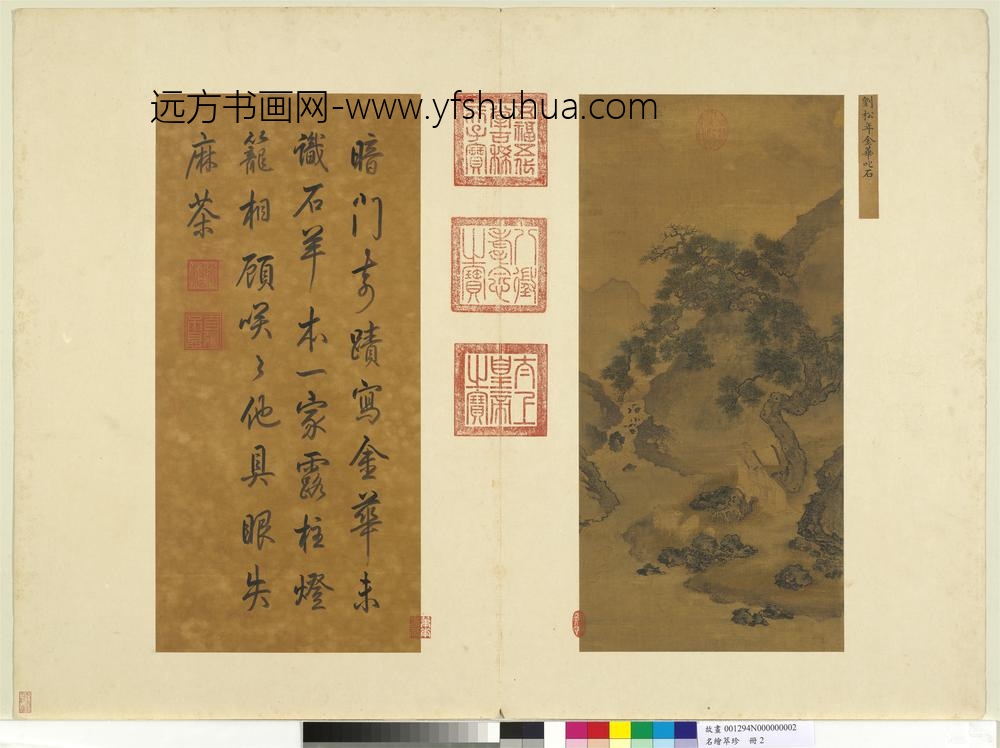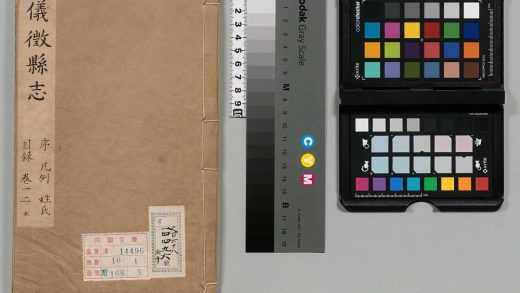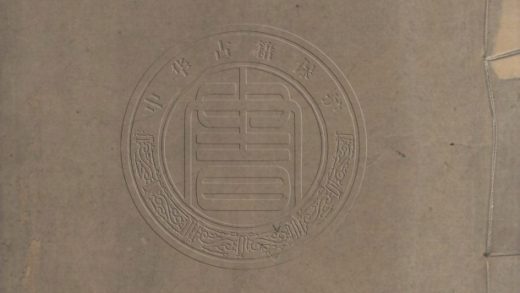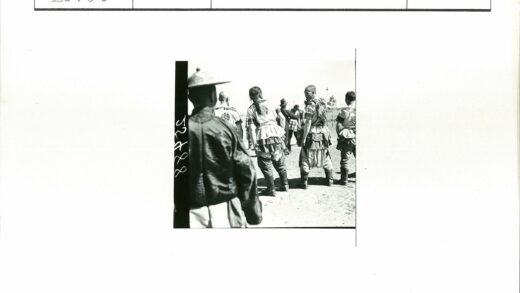【作品基本信息】
| 作者 | 刘松年 |
| 品名 | 金华叱石图-名绘萃珍册 |
| 朝代 | 南宋 |
| 文件大小 | 18.01MB |
| 分辨率(DPI) | 300×300 |
| 像素大小 | 2832×2120 |
| 尺寸(CM) | 23.97×17.94 |
| 作品数量 | 1 |
| 作品收藏 | 台北故宫博物院 |
| 图片格式 | 默认提供TIF和JPG两个版本 |
基本数据
| 藏品类型 | 绘画 |
| 品名 |
名绘萃珍 册 宋刘松年金华叱石 Huang Chuping at Jinghua Transforming Stones into Sheep |
| 分类 | 绘画 |
| 作者 | 刘松年 |
| 数量 | 一幅 |
典藏尺寸
| 【位置】 | 【尺寸】(公分) |
| 本幅 | 58×27.5 |
| 对幅 | 58×27.5 |
质地
| 【质地位置】 | 【质地】 |
| 本幅 | 绢 |
| 对幅 | 纸 |
题跋数据
| 【题跋类别】 | 【作者】 | 【位置】 | 【款识】 | 【书体】 | 【全文】 |
| 作者款识 | 刘松年 | 本幅 | 刘松年 | 楷书 | |
| 题跋 | 清高宗 | 对幅 | 行书 | 暗门奇迹写金华。未识石羊本一家。露柱灯笼相顾笑。笑他具眼失麻茶。 | |
|
印记: 八征耄念之宝、自强不息 |
|||||
| 题签 | 边幅 | 楷书 | 刘松年金华叱石。 | ||
印记资料
| 【印记类别】 | 【印记】 |
| 鉴藏宝玺 | 见天心 |
| 鉴藏宝玺 | 笔花春雨 |
| 鉴藏宝玺 | 五福五代堂古稀天子宝 |
| 鉴藏宝玺 | 八征耄念之宝 |
| 鉴藏宝玺 | 太上皇帝之宝 |
| 鉴藏宝玺 | 宣统御览之宝 |
主题
| 【主题类别】 | 【主题(第一层)】 | 【主题(第二层)】 | 【主题说明】 |
| 其他主题 | 山水 | ||
| 其他主题 | 山水 | 溪涧、湍泉 | |
| 次要主题 | 人物 | 高士(士人、隐士) | 皇初平 |
| 次要主题 | 树木 | 柏 | |
| 其他主题 | 花草 | 草 | |
| 次要主题 | 走兽 | 羊 | |
| 主要主题 | 经史‧故事 | 金华叱石;初平起石 |
技法
| 【技法】 | 【技法细目】 |
| 工笔 | |
| 写意 | |
| 皴法 | |
| 人物衣纹描法(匀称线条) | |
| 人物衣纹描法(粗细线条) | |
| 苔点 |
参考数据
| 【类别】 | 【参考数据】 |
| 收藏着录 | 石渠宝笈续编(御书房),第四册,页2054-2056 |
| 收藏着录 | 故宫书画录(卷六),第四册,页248-249 |
| 收藏着录 | 故宫书画图录,第二十九册,页146-151 |
| 内容简介(中文) | 相传晋代道士黄初平被称为黄大仙,浙江金华人。尝牧羊遇道士,引至金华山石室中修道成仙。他擅长法术,曾「叱石成羊」,本幅所画即是此故事。其兄从之修道,辟谷服松柏、茯苓亦成仙。又传说黄大仙也是赤松子。金华山曾在晋代建有赤松观,为江南道观之冠。信仰地区遍及中国东南,至华侨出外谋生,黄大仙信仰也随之传播,现今香港黄大仙庙,终年香火鼎盛,朝拜不绝,最为著名。本幅画黄大仙坐树干上看群羊,即是「叱石成羊」故事,画作风不似宋代刘松年。本幅为「名绘萃珍」第二幅。 |
| 内容简介(英文) | According to tradition, in the Tsin dynasty (265-419) lived a Taoist named Huang Ch’u-p’ing, a native of Chin-hua, Chekiang. Later, he was called Huang Ta-hsien (“Great Immortal Huang”). A story goes that one day Huang was herding sheep when he met a Taoist, who took him to a cavern at Mount Chin-hua and taught him the Taoist secret to become an immortal. Huang specialized in Taoist magic, once having “transformed stones into sheep,” the subject of this painting. Huang’s brother followed in his footsteps and studied Taoism, eventually becoming an immortal. Another story goes that Huang was known as “Red Pine” and had the Red Pine Abbey built at Mt. Chin-hua, becoming the crowning jewel of Taoist abbeys. The cult surrounding Huang is focused in southeastern China and, when Chinese began emigrating to other lands, they took their beliefs with them. The Temple of the Great Immortal Huang in Hong Kong presents a famous festival every year. In this painting, Huang appears seated looking at a flock of sheep, which refers to the above story. The style, however, appears unrelated to that of Liu Sung-nien. |
| 参考书目 | 1.王耀庭,〈宋刘松年金华叱石〉,收入王耀庭、童文娥编,《长生的世界:道教绘画特展图录》(台北:国立故宫博物院,1996年初版),页72。 |
【作品展示】

名绘萃珍册宋刘松年金华叱石




